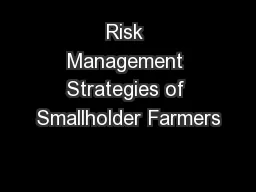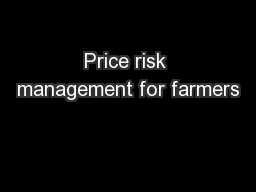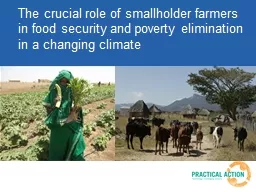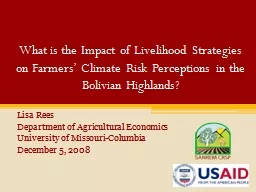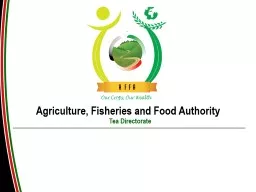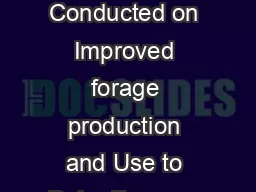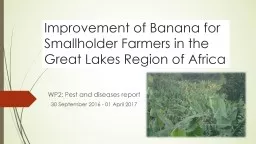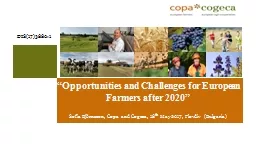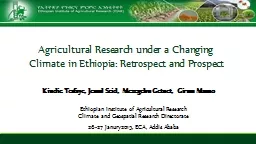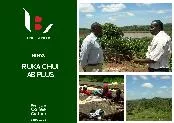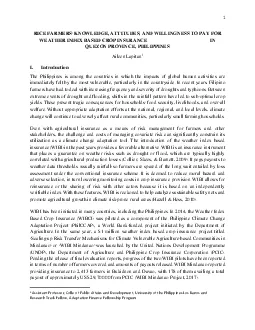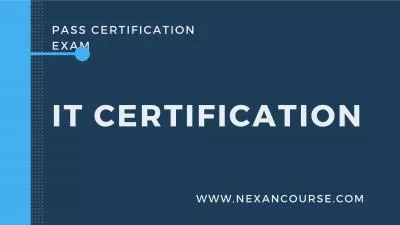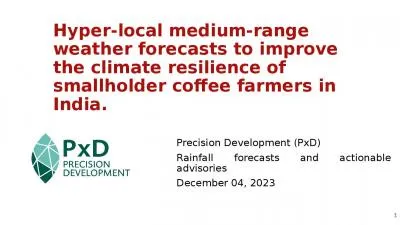PPT-Risk Management Strategies of Smallholder Farmers
Author : yoshiko-marsland | Published Date : 2018-10-27
in vulnerable production areas Brussels Policy Briefing 25 Food Price Volatility Implications for ACP Countries Brussels 30 November 2011 Thomas Elhaut Director
Presentation Embed Code
Download Presentation
Download Presentation The PPT/PDF document "Risk Management Strategies of Smallholde..." is the property of its rightful owner. Permission is granted to download and print the materials on this website for personal, non-commercial use only, and to display it on your personal computer provided you do not modify the materials and that you retain all copyright notices contained in the materials. By downloading content from our website, you accept the terms of this agreement.
Risk Management Strategies of Smallholder Farmers: Transcript
Download Rules Of Document
"Risk Management Strategies of Smallholder Farmers"The content belongs to its owner. You may download and print it for personal use, without modification, and keep all copyright notices. By downloading, you agree to these terms.
Related Documents

